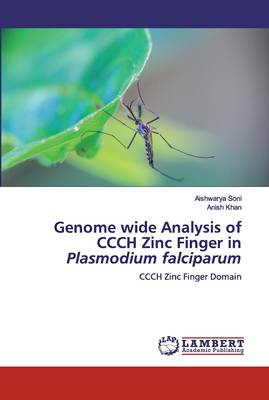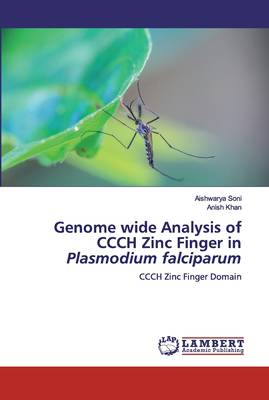
- Afhalen na 1 uur in een winkel met voorraad
- Gratis thuislevering in België vanaf € 30
- Ruim aanbod met 7 miljoen producten
- Afhalen na 1 uur in een winkel met voorraad
- Gratis thuislevering in België vanaf € 30
- Ruim aanbod met 7 miljoen producten
Zoeken
Genome wide Analysis of CCCH Zinc Finger in Plasmodium falciparum
Aishwarya Soni, Anish Khan
Paperback | Engels
€ 59,95
+ 119 punten
Omschrijving
Malaria is a well-known serious disease which is causing major health problems in children and adults worldwide. Most fatal form of malaria is caused by Plasmodium falciparum (Pf). In the present study, genome wide analysis of total 29 PfCCCH zinc finger containing genes were identified and classified into two classes, i.e. classical and additional CCCH. 10 PfCCCH genes were having only CCCH domain and 19 PfCCCH genes were having additional domains along with the CCCH domain. We analyzed these genes and extracted all the information regarding their chromosome position, nucleotide sequence length, molecular weight, isoelectric point and sub-cellular localization. Maximum PfCCCH proteins were found to localize in nucleus and sequence logo of PfCCCH zinc fingers were generated to show the level of conservation of specific residues at particular positions. Evolutionary links between PfCCCH zinc fingers were drawn by phylogenetic analysis. In a nutshell, the present study provides a genomic glimpse of CCCH zinc finger family in P. falciparum.
Specificaties
Betrokkenen
- Auteur(s):
- Uitgeverij:
Inhoud
- Aantal bladzijden:
- 100
- Taal:
- Engels
Eigenschappen
- Productcode (EAN):
- 9786200536570
- Verschijningsdatum:
- 22/01/2020
- Uitvoering:
- Paperback
- Formaat:
- Trade paperback (VS)
- Afmetingen:
- 152 mm x 229 mm
- Gewicht:
- 158 g

Alleen bij Standaard Boekhandel
+ 119 punten op je klantenkaart van Standaard Boekhandel
Beoordelingen
We publiceren alleen reviews die voldoen aan de voorwaarden voor reviews. Bekijk onze voorwaarden voor reviews.











